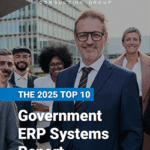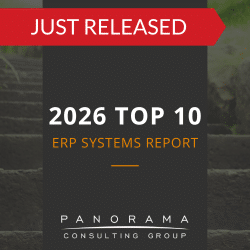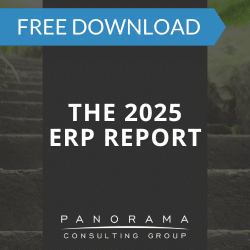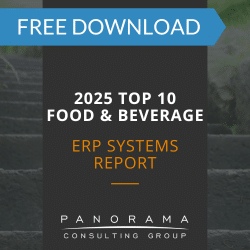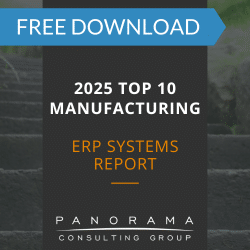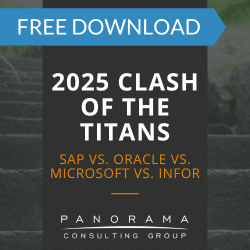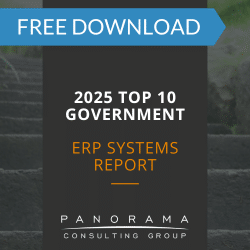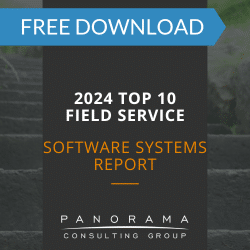- Accurate forecasting of post-implementation ERP costs involves modeling for staffing, retraining, and long-term system usage.
- ERP maintenance costs tend to rise with system complexity, multi-site support, and increased customization over time.
- Organizations often face unplanned ERP optimization costs tied to changing business models, regulatory shifts, and evolving KPIs.
- A well-structured ERP forecast reflects real-world scenarios, including acquisitions, headcount changes, and international expansion.
When interest rates spike, supply chains falter, and operating margins get squeezed from both ends, there’s no room for financial blind spots—especially when it comes to post-implementation ERP costs.
Too many executives walk into ERP selection and implementation with a clear idea of upfront costs but a murky sense of what comes next. The truth is, the most expensive line items often surface after go-live—ERP maintenance costs, upgrade cycles, process optimization initiatives, and retraining efforts.
When these costs aren’t accurately forecasted, they erode value and limit the business case for transformation.
Predicting and managing post-implementation costs requires CFOs to shift how they approach cost modeling, vendor agreements, and internal governance. Keep reading to learn how to set this foundation well before go-live.
2025 Clash of the Titans
SAP, Oracle, Microsoft, and Infor each have a variety of systems that can support data-driven decision-making. We surveyed customers of these four vendors to find out what their selection and implementation process was like.
Why ERP Post-Implementation Forecasting Deserves Executive Attention
Forecasting post-implementation ERP costs is an activity that’s often delegated to finance teams after the system is up and running. However, few conversations are more critical for the C-suite than post-go-live costs. Your ability to run a responsive, cost-efficient business, depends entirely on how well you plan for these costs.
Here’s the reality: ERP software continuously evolves alongside your business. From the moment your system goes live, new expenses kick in, each shaped by your vendor, your internal capabilities, and how rapidly your industry is transforming.
Failing to account for these dimensions creates an illusion of stability—right before operational issues or budget overruns emerge.
Here are five key categories of post-implementation costs that demand proactive forecasting:
1. ERP Maintenance Costs That Escalate Over Time
- Security patching becomes more frequent and resource-intensive as the system evolves.
- System monitoring grows in complexity, especially with customizations and integrations.
- Help desk support demands increase as more users across sites rely on the system.
These challenges are amplified in multi-site or hybrid environments, where coordination and consistency are harder to maintain.
Expert Insight
Cloud-based ERP systems often come with subscription pricing that may obscure certain recurring costs until you scale up usage, add modules, or trigger consumption-based billing thresholds. Don’t assume SaaS equals simplicity—ask for detailed, long-term pricing roadmaps before you commit.
2. Customization and Integration Rework
Forecasting ERP optimization costs means thinking beyond the initial implementation scope to anticipate how much change your organization is likely to absorb annually. Even if your ERP system was implemented with a strong process fit, it’s unlikely you’ll go five years without major changes to workflows, reporting needs, or regulatory compliance requirements.
Each of these changes tends to touch custom configurations and integrations. Unfortunately, integrations with third-party systems (CRM, MES, WMS, payroll, etc.) often break when either side upgrades.
Our ERP selection consultants always advise clients to forecast the cost of keeping integrations functional, especially if they rely on niche systems or unique data flows.
3. Process Optimization and Continuous Improvement Initiatives
Most organizations revisit key workflows or KPIs post-implementation, whether to remove inefficiencies, improve adoption, or support new business models. These initiatives carry real costs:
- Additional consulting to assess and implement improvements
- System reconfiguration to support updated workflows or goals
- Retraining to ensure users can adapt effectively
- New licenses when added functionality or modules are required
Organizations that succeed in ERP optimization build a post-implementation roadmap that anticipates these costs. Without a plan, teams are forced to address changes as they come with quick fixes that aren’t budgeted and usually cost more than planned improvements.
4. Internal Talent and Training Costs
Forecasting post-implementation costs accurately means acknowledging the time and resource burdens on your internal staff.
Expect turnover. Expect new hires. Expect to pay for more training than you originally planned.
Your internal ERP team is a strategic asset—and underestimating the cost to build and retain that capability can be one of the most expensive mistakes you make.
For example, a nonprofit organization might underestimate the internal hours required to maintain donor management integrations and produce board-level reports.This would place unexpected strain on staff already stretched thin and lead to unplanned overtime costs and delayed insights that affect funding decisions.
5. License Expansion and Usage Growth
As your headcount increases, so do license fees. Add new business units, and you’ll need additional configuration and access controls. Expand globally, and localization requirements introduce a whole new layer of complexity.
Most organizations underestimate this growth curve—especially in subscription-based models, where user-based fees or module-based pricing can compound quickly.
A strong ERP forecast looks beyond your current structure and anticipates how your business will grow over a three- to five-year horizon. We recommend modeling license and support cost projections under multiple growth scenarios and confirming with vendors how those changes will affect contract terms, pricing tiers, and infrastructure requirements.
Building a Smarter Forecast: From Reactive Guesswork to Strategic Planning
Once you’ve acknowledged the reality of long-term ERP maintenance costs and optimization initiatives, you can model them in a way that supports decision-making.
Post-implementation forecasting should be a structured, data-backed discipline—one that begins during selection, ties directly to business planning, and is reviewed consistently to reflect new realities.
Here are six actionable ways to improve your ERP cost forecasting model:
1. Tie Cost Forecasts to Specific Business Scenarios
Rather than guessing how much “support” or “optimization” you’ll need, link your cost projections to specific business events.
- Doubling your warehouse footprint
- Acquiring a competitor
- Rebranding or restructuring
Modeling post-implementation ERP costs against concrete growth scenarios allows executives to see the financial ripple effects of strategic decisions.
This approach also gives you a language to challenge vendor assumptions—and a framework for securing budget from finance or the board when unplanned initiatives arise.
2. Put Maintenance and Optimization Line Items in Your Strategic Plan
Repositioning maintenance and optimization as strategic investments, rather than back-office expenses, helps you allocate the right level of funding—and ensure it stays in place when priorities shift.
For example, a manufacturing company might build an annual ERP improvement budget that includes funds for updating manufacturing ERP system integrations and revising production scheduling workflows. This would position these efforts as key to business performance, while ensuring funding is protected from budget pressures and spending freezes.
Our ERP software consultants often tell clients to include ERP lifecycle costs in every annual planning cycle, and ensure department leaders are accountable for the change requests and process improvements that trigger these costs.
3. Engage Independent Advisors to Understand Company-Specific Cost Drivers
Vendor pricing calculators won’t show you the true cost to maintain and optimize your ERP solution across industries, regions, and company sizes.
Independent ERP consultants—those who aren’t paid referral fees by software providers—can help you model total cost of ownership (TCO) in a more dynamic way. They’ll factor in hidden costs like region-specific compliance updates and industry-driven customization needs.
4. Define Governance for Change Requests and System Enhancements
Forecasting post-implementation costs accurately requires disciplined governance. Without it, every department may request changes that bloat the system and trigger expensive rework.
We recommend defining clear approval processes for enhancements, including cost impact assessments, ROI thresholds, and vendor resource allocations. This ensures your system evolves deliberately—not chaotically.
An executive steering committee should review change requests quarterly, not just at go-live. That cadence gives you better visibility into trends and budget implications across the enterprise.
5. Include Retraining and User Support in Every Forecast Cycle
ERP fatigue is real. Even in well-executed implementations, user adoption tends to decline over time, unless supported by continual engagement efforts.
Each new system enhancement, feature rollout, and organizational change requires targeted retraining. Yet, most organizations neglect to budget for this.
Instead of seeing training as a one-time expense, include it as a recurring line item in every ERP cost forecast. This strengthens user adoption, reduces error rates, and accelerates ROI.
6. Revisit Forecasts Annually and After Major Business Changes
Treat your ERP cost forecast like a living document. Review it annually as part of your strategic planning cycle, and immediately following major business events—such as a divestiture, M&A activity, or new market entry.
These events often trigger a cascade of configuration changes, license needs, and compliance updates that carry significant costs.
By embedding this review cadence into your governance model, you’ll spot cost shifts early and reallocate resources more effectively.
ERP Success Is a Moving Target—Forecast Accordingly
Too often, cost forecasts are based on legacy systems, vendor promises, and internal assumptions that don’t reflect the true lifecycle of a modern ERP system.
Forecasting post-implementation ERP costs requires a more agile, transparent financial model that evolves with your business. Done right, your forecast reveals where to invest in optimization, where to trim waste, and how to get ahead of cost curves.
Contact our ERP implementation consultants below to start developing the financial leadership your ERP implementation needs.


